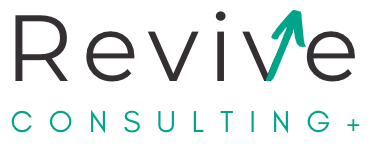First Steps for How to Improve Diversity in Your Practice By Cammy Smith & Ella Radice
July 21, 2020
If there is anything to be realized in this moment, it is that we are long overdue for change, both society-wide and more specifically, in financial services. In FlexShares recent study, it was found that investors tend to choose advisors like them. For example, women are four times more likely than men to work with a female advisor, 98% of white clients work with white advisors, and over 62% of non-white or Asian clients work with non-white or Asian advisors.
However, while 32% of the U.S. population is black or Latino, only 3.5% of CFPs are and though 51% of U.S. population is female, only 14% of financial advisors are. In summation, the financial services industry is lagging behind the increasingly diverse U.S. population. We must make a greater conscious and collective effort to cultivate diversity in a very homogenous industry.
Here are a few first steps to better diversify your practice:
Recruit Beyond Personal Networks
61% of advisors recruit from their personal networks, which tend to intrinsically lack diversity, resulting in a widely homogenous financial services industry. Therefore, firms must prioritize diversity-focused recruitment strategies. These strategies should include benchmarks to measure success and designated team roles to hold your practice accountable. In doing so, you are making the conscious effort to look beyond personal networks and discover untapped, diverse talent. Consider increasing your talent pool by actively engaging in outreach with organizations committed to diversity.
Outreach
Create relationships with organizations and groups committed to diversity. For example, professional associations for advisors of color, professional associations for female advisors, degree programs at historically black colleges and universities (HBCU) and other diverse programs. These groups are a great source of talent for your business and a great way to expand and diversify your network.
Ramp up D&I Training and Resources
It is easy to overlook the necessity for quality D&I training. It’s easy to host an obligatory biannual D&I session so go the extra mile. Do more than scratch the surface. Improve and expand your firm’s diversity and inclusion training by digging deep into cultural difference and take the time to have these uncomfortable conversations. In doing so, you will bridge gaps of misunderstanding and build stronger workplace relationships. In addition to office-wide training, create a D&I council to lead diversity initiatives such as an office-circulated monthly D&I newsletter with diversity-related resources and news.
Educate Yourself
Make a point of educating yourself. Take the time to read up on our history and current events relating to race and ethnicity, gender, sexual orientation and more. Get to know your colleagues who come from different backgrounds and be open to new perspectives and ideas when tackling business problems. Establishing this sense of understanding is likely to foster a healthier workplace culture, increase productivity, and develop a greater sense of cultural awareness and sensitivity.
As you can see, the financial services industry has a way to go when it comes to diversity. Collectively, we need to make a conscious effort to do better. These first few steps are just the beginning towards diversifying our industry to become one that is more reflective of the U.S. population and therefore, stronger and brighter.
We are often asked about the business case for diversity. What’s motivating about doing well by doing good is that increasing diversity often times leads to improved financial return.McKinsey’s ‘Diversity Matters’ project completed an analysis of 366 companies and reported a strong correlation between diversity and financial performance.
Companies ranking the highest for gender diversity were 15% more likely to have financial returns that were above their national industry median, and companies in the top quartile for racial/ethnic diversity were 35% more likely to have financial returns above the median. Diverse work environments optimize customer and employee satisfaction, generate innovation, promote broader thinking and therefore, better solutions and decision-making, among other benefits.
For more information and resources, check out the FlexShares Advisor Teams and Diversity Study.
